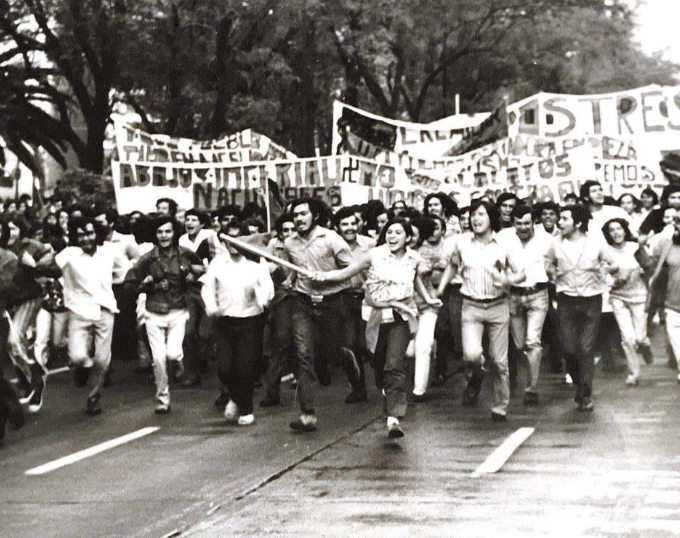By Mia Garcia, Staff Reporter
On October 2, 1968 – just days before the start of the Summer Olympics in Mexico City – university students gathered in La Plaza de las Tres Culturas at Tlatelolco to demand government accountability. Over 10,000 people rallied against the Mexican authorities . The students of Tlatelolco demanded the government to hear their voices and respect their freedom of expression, but what started as a peaceful protest would soon end as a horrific display of state-sponsored violence.
The 1968 student-led movement began as a condemnation of what organizers considered a state-sponsored culture of violence and repression. At the time, Mexico had effectively become a one-party state under the ruling Partido Revolucionario Institucional, or Institutional Revolutionary Party (PRI). The movement called for democratic reforms, including the release of political prisoners and the disbanding of Mexico’s tactical police force.
The PRI, however, would respond to those calls with deadly force.
Together with the Mexican military, police officers fired into the crowd of unarmed students and civilians. Snipers posted on rooftops, while police drove tanks through the plaza. Hundreds of people were either killed or wounded by Mexican law enforcement, while several others were beaten, arrested, or imprisoned. The official death toll is still unknown to this day, but historians estimate the violence killed at least 400 people that day.
More than five decades later, the fight against government corruption continues in Mexico City, led by some of the activists who had witnessed the violence at Tlatelolco. Among those activists is Cristina Gomez, a professor at the Universidad Nacional Autonoma de Mexico who was heavily involved in the 1968 movement. In an interview with The Bulletin, Gomez said she was part of a generation that “wanted to live in a better world.”
“The streets are no longer repressed – there is freedom of expression – but that does not mean we have conquered a better world,” Gomez said. “There is so much more to be done, but I think the time for change has begun.”
At CSUDH, the Latinx Cultural Resource Center (La Casita) hosted an event on Oct 3 to commemorate the massacre at Tlatelolco. The remembrance opened with remarks by Spanish professor Maricela Becerra Garcia, who outlined the history of the incident and the goals of the student-led movement.
“It’s important to remember the student movement before the massacre … [two-and-a-half months] of organizing that took place because we saw a union between students from different universities, from different levels as well,” Garcia explained. “And the massacre itself, the main point will be my opinion to never stop fighting for justice.”
Students who attended told The Bulletin that the event offered new perspective and insight about the movement and the massacre.
“At the end of the day, [the protesters] lost their lives because they tried to fight against the system and the system silenced them by killing them,” said Elenna Hernandez, a fourth-year sociology and Chicana and Chicano studies student.
Correction — Oct. 10, 2024: The printed version of this story misspelled the name of student Elenna Hernandez as “Elena Rlandes.” The Bulletin regrets this error, and the above story has been edited accordingly.

